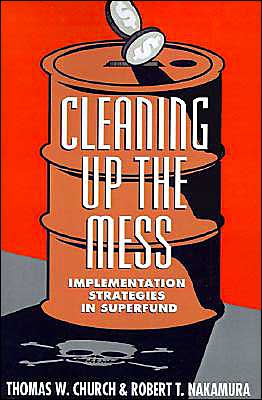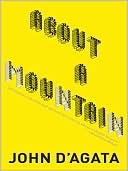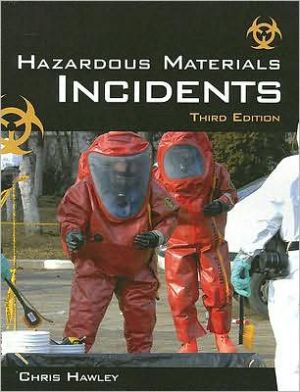Cleaning Up the Mess: Implementation Strategies in Superfund
The federal Superfund program for cleaning up America's inactive toxic waste sites is noteworthy not only for its enormous cost-- $15.2 billion has been authorized thus far--but also for its unique design.
Search in google:
The federal Superfund program for cleaning up America's inactive toxic waste sites is noteworthy not only for its enormous cost-- $15.2 billion has been authorized thus far--but also for its unique design. Booknews An in-depth study of Superfund operations at hazardous waste sites. In order to find out "what works," the authors examine six Superfund cleanups, including three regions and both "hard" and "easy" sites. They describe various strategies that have been employed by government regulators and the responses to those different strategies by business and local government officials. Annotation c. Book News, Inc., Portland, OR (booknews.com)
PrefacePt. 1Program Design1Introduction3Statutory Framework4Competing Strategies for Superfund Implementation8A Case Study Approach to Superfund132Superfund's Tool Kit17Policy Tools18Implementation Strategies in Superfund21Goals35Pt. 2Case Studies3Prosecution43Regional Characteristics and Strategic Choices43Laskin Poplar47Cliffs Dow59Assessing the Prosecution Strategy644Accommodation67Regional Characteristics and Strategic Choices67Tybouts Corner Landfill71Harvey and Knott Drum84Assessing the Accommodation Strategy935Public Works95Regional Characteristics and Strategic Choices96Lee's Lane Landfill100Davis Farm107Assessing the Public Works Strategy112Pt. 3Cleaning Up the Mess6What Works?117Examining the Approaches119Lessons1357Ruminations on Reform143The Complexity of Joint Action146Superfund's Liability System162Conclusion: Homilies from Superfund on "Making Privatization Work"168Glossary173Notes177Index205
\ BooknewsAn in-depth study of Superfund operations at hazardous waste sites. In order to find out "what works," the authors examine six Superfund cleanups, including three regions and both "hard" and "easy" sites. They describe various strategies that have been employed by government regulators and the responses to those different strategies by business and local government officials. Annotation c. Book News, Inc., Portland, OR (booknews.com)\ \ \ \ \ Rosemany O'LearyIn CLEANING UP THE MESS: IMPLEMENTATION STRATEGIES IN SUPERFUND, Thomas W. Church and Robert T. Nakamura investigate and analyze the strategies of the United States Environmental Protection Agency (EPA) to foster cleanup of hazardous waste sites. The book is a series of case studies with subsequent analysis of "the nitty-gritty" of Superfund decision making. The implementation of the Comprehensive Environmental Response, Compensation and Liability Act (Superfund or CERCLA) is described and advice is given as to how the program might be implemented more effectively. Chapter one sets the stage by explaining the statutory framework of the Superfund statute. The competing implementation strategies of coercion, cooperation, and the "public works" approach (i.e., cleaning up the sites) are overviewed. The authors' case study approach is explained. In Chapter Two, Church and Nakamura discuss Superfund's well known statutory tools, such as strict liability, joint and several liability and retroactive application. Actual implementation strategies are described. Four objectives of the Superfund program are outlined: application of an appropriate remedy; minimum cost to taxpayers, expeditious cleanup of sites; and minimum transaction costs. The next three chapters present case studies of the challenges of implementing Superfund. The authors deftly describe the cases, neatly organized into prosecution, accommodation and public works categories. Assessments of each strategy follow the case studies. The sixth chapter examines "lessons learned" from the case studies with the intent of illuminating what works and what doesn't work in Superfund implementation. To their credit, the authors emphasize that to truly understand Superfund implementation, the reader must clearly understand the turbulent "environment" in which the EPA operates. Examples of sources of constraints include the courts, Congress, the budget, and clashing bureaucratic and political imperatives. Examples of lessons learned, roughly paraphrased, include (1) there are trade-offs among strategies; (2) not all costs and risks associated with cleanups will be borne by private parties; (3) it may be possible in some situations to create a win-win agreement among parties; and (4) each remedy should be site specific. The authors close the book by presenting their "ruminations on reform" which include such ideas as creating conditions favorable to boundary spanning Page 19 follows: among organizations, alternative dispute resolution, creating a new government organization, and modifying incentives, including how we measure Superfund success. Prescriptions for successful privatization of Superfund cleanups are presented, including: considering transaction costs; recognizing how privatization ties the hands of the EPA; developing realistic solutions; promoting government actions that will be perceived as reasonable (because those perceived as unreasonable may prompt resistance). The book is well written and interesting to read. The thesis is clearly stated and developed. To their credit, the authors make clear the limits of their methodology and hence the limits of their analyses. The use of evidence and documentation to back up assertions and conclusions is a particularly strong feature of the book. The book is logically organized. The book would be an excellent text in introductory courses concerning policy implementation, environmental policy and environmental law. It also would be useful for elected officials trying to understand the basics of the Superfund act and program. Finally, the book would be useful for beginning lawyers with little knowledge or experience concerning the intricacies of hazardous waste cleanup. The only shortcoming of the book (which is also a strength) is its simplicity. The authors do not assume that the reader has any knowledge of environmental policy, basic economics, or "Government 101." For example, they go to great lengths to explain concepts such as market failure (p. 17), and the limits of privatization (p. 169). In addition, Church and Nakamura put in writing what most people with some experience in the field already know. The crazy Superfund implementation stories that fuel this work, for example, are the subject of conversation at every American Bar Association convention. Nonetheless, CLEANING UP THE MESS is a fine contribution to the literature. I would not hesitate to use it in my graduate and undergraduate classes. It is especially a "must read" for our newly elected congresspersons interested in responsible government change.\ \








